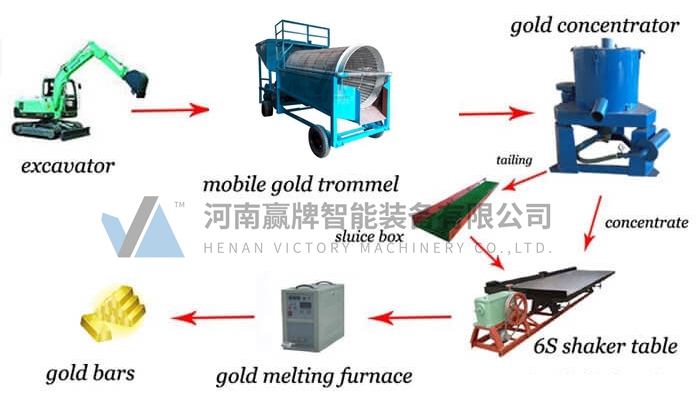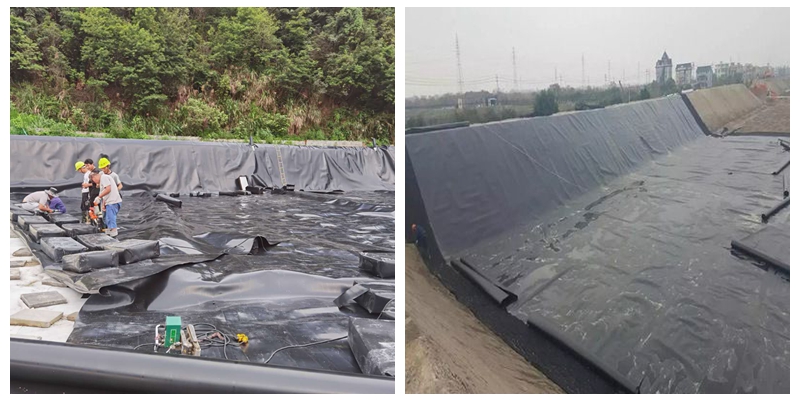With rich experience in gold mining projects, Henan Victory Machinery Co., Ltd. helps customers obtain higher output and recovery rates at lower operating costs. We provide customized solutions for different types of gold ore. The general processing technology of gold ore is summarized as follows:
1. Gravity Separation
For alluvial gold, also called sand gold, gravel gold, placer gold or river gold, gravity separation is suitable. This type of gold contains mainly free gold blended with the sand. Under this circumstance, the technology is to wash away the mud and sieve out the big size stone first with the trommel screen, and then using centrifugal concentrator, shaking table as well as gold carpet to separate the free gold from the stone sands.

2. Flotation
Flotation process are widely used for improving the sulfide type gold ore grade. The ore pulp slurry is pumped to flotation cells for extracting. The flotation cells are divided into several parts: roughing, concentration and scavenging (the exact numbers of stages for each part should be decided by test work to reach the best recovery), and with the use of frothing agent and collecting agent, the gold concentrate will be collected. The flotation concentrates can be sold to the smelting factory based on normal trade or processing agreement. The flotation concentrates go to cyanide process or calcination process (if there is arsenic together with the concentrate) and further process to get pure gold in the smelting factory. During this process, the silver & copper can also be collected.

3. Carbon in Leaching (CIL)
CIL is mainly used to process oxide-type gold ores that have low recovery rates or use flotation and/or gravity loops that still have a large amount of gold remaining. The slurry containing uncovered gold from the primary circuit is directly pumped to the thickener to adjust the slurry density. It is then pumped to the leaching equipment and dissolved in the aerated sodium cyanide solution. The dissolved gold is directly adsorbed into the coarse particles of activated carbon at the same time, which is called the carbon leaching method (CIL).

4. Heap leaching
Heap leaching is always the first choice to process low grade ore easy to leaching. Based on the leaching test, the gold ore will be crushed to the determined particle size and then sent to the dump area. If the content of clay and solid is high , to improve the leaching efficiency, the agglomeration shall be considered. By using the cement, lime and cyanide solution, the small particles would be stuck to big lumps. It makes the cyanide solution much easier penetrating and heap more stable. After sufficient leaching, the pregnant solution will be pumped to the carbon adsorption column for catching the free gold. The barren liquid will be pumped to the cyanide solution pond for recycle usage.

5. Desorption Electrolysis& Smelting Process
The loaded carbon is treated at high temperature to elute the adsorbed gold into the solution once again. The gold-rich eluate is fed into an electrowinning circuit where gold and other metals are plated onto cathodes of steel wool. The loaded steel wool is pretreated by calcination before mixing with fluxes and melting. Finally, the melt is poured into a cascade of molds where gold is separated from the slag to gold bullion.